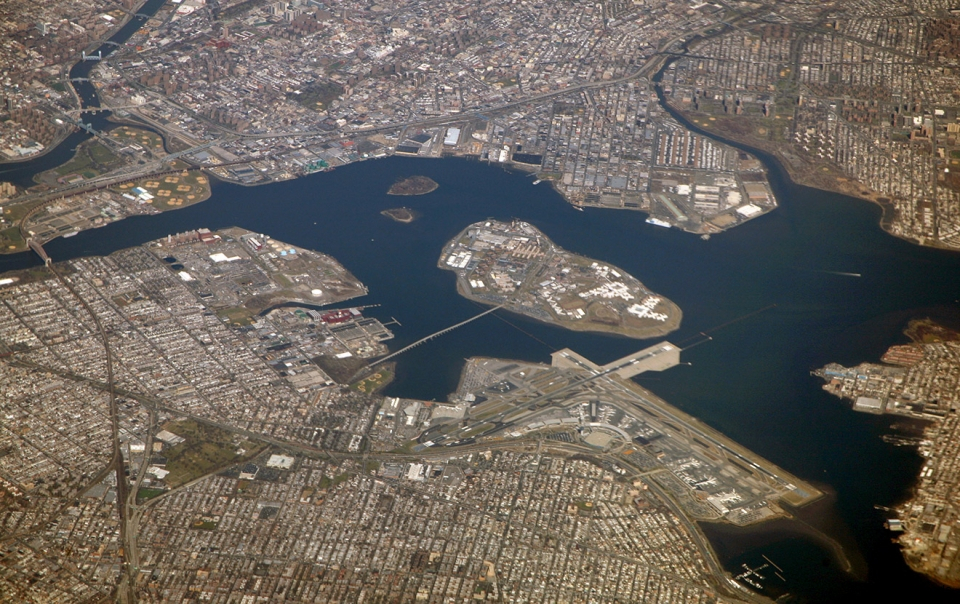There’s a known stench on Rikers Island in the New York summertime. Neither the people incarcerated there, nor the correction officers working there, can escape it. “The smell alone would torture you,” says Candie Hailey-Means, who was incarcerated at Rikers until May 2015. “It smells like sewer, mixed with fertilizer, mixed with death.”
....
On Dec. 18, 2014, Preet Bharara, the U.S. attorney for the Southern District of New York, announced the Justice Department’s plan to sue New York City due to the abuse of inmates on Rikers Island. (The lawsuit was consolidated with a 2011 class-action lawsuit filed by the Legal Aid Society.) Mayor Bill de Blasio announced a number of reforms in 2015, including the addition of Enhanced Supervision Housing units and daily violence prevention programs. The Board of Correction also implemented reforms on solitary confinement that reduced the number of people held there.
It’s the abuse and violence at Rikers that have received the most attention. But there’s another dimension to the ongoing disaster there: the dangerous environmental conditions. Rikers is built on a landfill. The ground underneath the facilities is unstable and the decomposing garbage emits poisonous methane gas. In addition to extreme heat and poor air quality, flooding and crumbling infrastructure pose a serious threat, especially when superstorms like Hurricane Sandy strike. As the violence and human rights violations worsen, so do the environmental circumstances surrounding Rikers.
Even in the absence of a natural disaster, buildings on Rikers Island flood during regular rain and snowfalls, mainly due to the facility’s dilapidated state. According to interviews with people incarcerated there and experts’ reports, the jail complex is falling apart: cracks in the surfaces and foundation of buildings, peeling paint, missing floor and wall tiles, corroded metal walls, damaged doors, and broken window screens. Since the beginning of 2015, the Legal Aid Society has received complaints of flooding from people being held in the Robert N. Davoren Center (RNDC), Anna M. Kross Center, George Motchan Detention Center, Rose M. Singer Center, and the Otis Bantum Correctional Center.
....
Money will certainly be a determining factor in the fate of Rikers. City Comptroller Scott Stringer released a study in 2015 showing that the cost per inmate, $112,665, is the highest it’s been in three decades. In November, Stringer called for the jail to be closed, citing poor infrastructure and the cost of keeping it open.
Some advocates want Rikers closed, too, but more for moral reasons than financial ones. “Any criminal justice effort in New York City that falls short of closing Rikers amounts to a blatant disregard for the needs of communities that have been ravaged by this factory of despair,” says Glenn Martin from JustLeadership USA. JustLeadershipUSA is part of a coalition of more than a dozen advocacy groups that are pressuring lawmakers in Albany to shutter Rikers. Since Rikers is a jail — i.e., a short-term facility for both people awaiting trial and minor offenders — the length of stay for many detainees depends on how long their due process takes. Martin and others argue that the judicial process needs as much repair as Rikers itself.
“In order to reduce the number of residents enough to close Rikers, we must reduce inexplicably lengthy court delays and enact meaningful bail reform,” says Martin. He wants to see a system of localized, neighborhood jails — instead of one, behemoth clearinghouse — and an investment in communities.
There are currently jails off Rikers Island in Brooklyn, Manhattan, and the Bronx, but they all come with a host of their own poor conditions. New neighborhood jails will likely be costly and politically difficult since council members tend to not want new jails in their districts.
However, the Campaign to Shut Down Rikers, a group of activists and formerly incarcerated people, argues that new jails wouldn’t be necessary. What they’re calling for instead is a divestment from mass incarceration, along with an end to bail, and an investment in health care, living wage jobs, and mental health treatment that would lead to safer communities. For starters, moving the 40 percent of the population that suffers from a mental illness to a treatment center would reduce the jail population significantly.
“We’re pouring money into an archaic structure, when we should be asking how we can reduce the population in order to close it,” says Johnny Perez of Urban Justice Center. “The problem with Rikers Island is Rikers Island. … [The conditions] really border on cruel and unusual punishment.” In the meantime, the next heatwave, hurricane, or big snowstorm could spell disaster.
